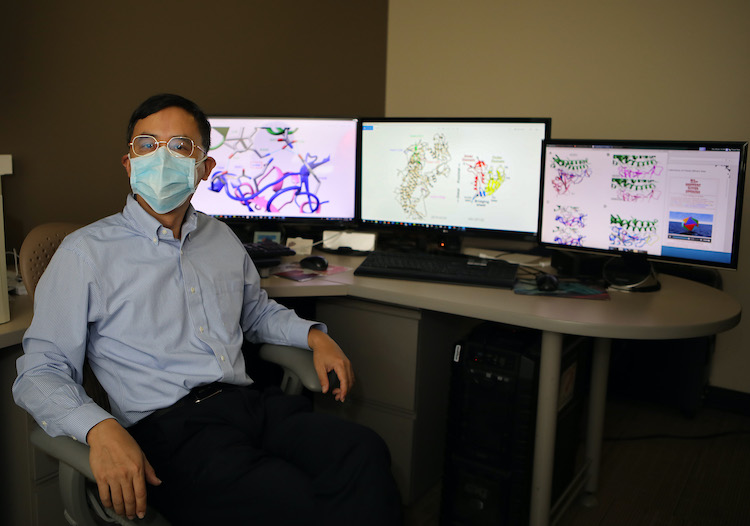UTEP Professor Helps Identify How Coronavirus Transmits from Animals to Humans
Last Updated on June 19, 2020 at 12:00 AM
Originally published June 19, 2020
By Julian Herrera
UTEP Communications
Chuan Xiao, Ph.D., associate professor of chemistry and biochemistry at The University of Texas at El Paso, is contributing his expertise to research on the transmission of the novel coronavirus from animals to humans.

Xiao collaborated with Feng Gao, M.D., Ph.D., professor at Duke University Medical Center and previously a member of the External Advisory Committee for UTEP’s Border Biomedical Research Center (BBRC), to publish a paper refuting the conclusions of an unreviewed study suggesting that SARS-CoV-2, the virus that causes COVID-19, was generated by obtaining four HIV sequences that allow it to infect humans. In their paper, published in the journal Emerging Microbes & Infections, Xiao, Gao, and other co-authors have shown these four HIV short sequences are very common in nature, and using those sequences to make the virus infect humans has no scientific basis at all. Many studies have since confirmed that no intentional modification of the virus’s genetic sequences has been observed.
As more cases became available for analysis, Xiao participated in an extension of the study performed at Duke University that sought to study the genetic fragmentations of SARS-CoV-2 that allowed it to infect humans, aiding in the understanding of its origin and evolutionary path in order to mitigate any outbreaks in the future.
“As a structural virologist, what I have done for the paper is look at the interface between the spike protein and human ACE2,” Xiao said. ACE2 is a cell surface molecule that serves as an entry point into human cells for SARS-CoV-2.
The team analyzed the genetic structure that is crucial in understanding the transmission of the disease from animals to humans.
“We try to understand what alterations of sequence allowed animal, such as the bat and pangolin, coronaviruses to attack humans. My contribution is just providing structural analyses that support the conclusions,” Xiao said of the final results published in Science Advances. “However, as a UTEP researcher, I am proud that I have contributed to the COVID-19 research.”
Xiao has close to three decades of experience in molecular biology, with more than 20 years dedicated to the study of biological macromolecules and viruses through a combination of X-ray crystallography and cryo-electron microscopy. The research he conducts through these methods primarily concern biochemical structures, specifically giant viruses, common cold viruses and the mammalian circadian system.
Xiao’s research contributions are one example of how UTEP is part of the solution to the COVID-19 crisis. Xiao’s work continues in earnest, as he has published two papers related to COVID-19 himself, reviewed four others, and has served as associate editor of eight others.
